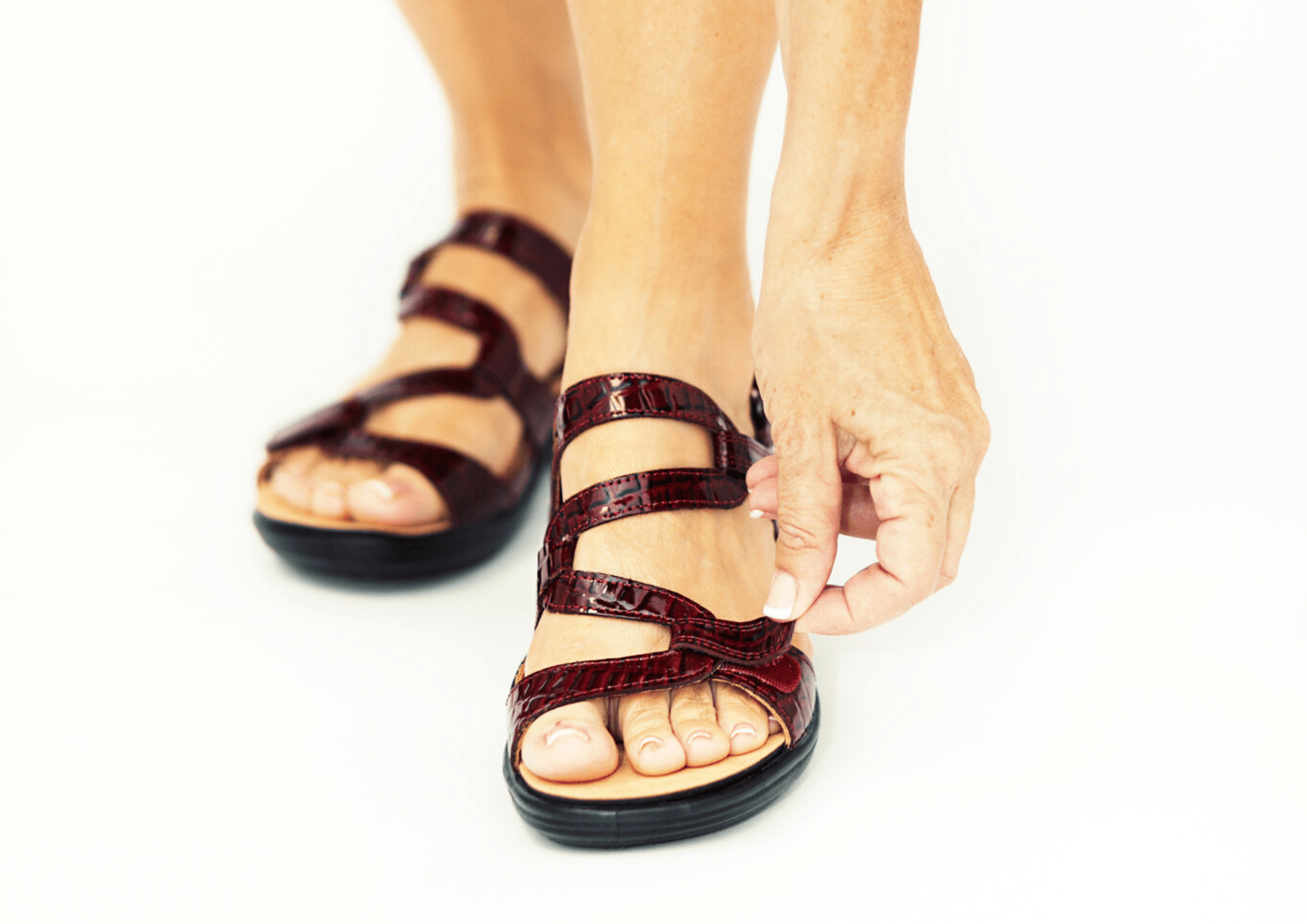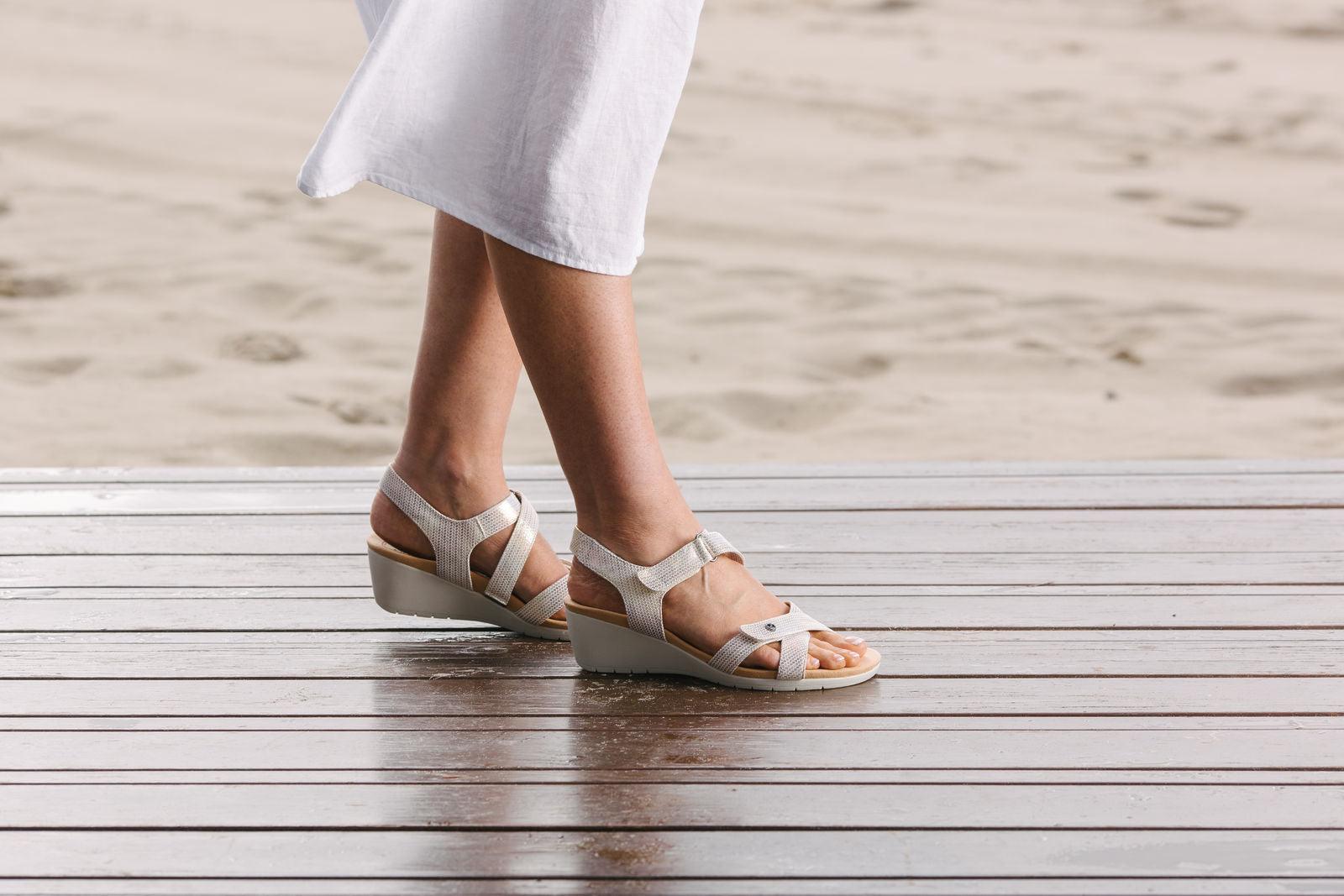
How Sandals Should Fit
Sandals might just be the most comfortable shoes in your summer closet. Their easy-to-slip-on silhouette is versatile and breathable, with the power to anchor any outfit in nonchalance. But to reap the rewards of sandals, fit is everything. There’s nothing worse than slipping out of your sandal wedges or feeling constricted in them. It can also lead to long-term effects such as inflammation, discomfort and pain like plantar fasciitis - an absolute no-no for the revere team. So, to prevent this, here's our guide to how sandals should fit. Use it for future purchases or to help improve your current sandal situation.
Not too small, not too big!
There are a few telltale signs when sandals could be a size too small or too big for you. When your feet hurt during or after wearing sandals, well, that’s a huge giveaway! If your closed heel sandals are causing blisters, calluses, heel spurs or even ingrown toenails - it’s likely that your sandals are fitting too small. We feel your pain! Maybe your toes are hanging over the front or sides of your sandals - that’s a problem - and the same goes if your heels protrude over the back. Do your feet slide forward or backward as you walk? That might mean your sandals are simply too big. And if you need to change your gait to compensate for shoes rubbing or slipping off - your sandals do not fit. When it comes to strappy numbers, when the straps are digging into the skin and causing discomfort, you guessed it, it’s time to adjust!
The perfect fitting sandals
Properly fitting sandals must be both comfortable and supportive. There should be proper arch support, no overhang and no tight straps that dig into the skin. Your feet are snug in the footbed and move with your sandals as you walk - not against them. Try our 5-second test by standing upright in your sandals - your whole foot should sit within the sole of your sandals when you stand up. If it doesn’t, you need to find the perfect fit.

1. Go up or down a (half) size
If you have overhang in your sandals, you can probably go up a size. Likewise, if your foot slips and slides as you walk, it’s time to size down your sandals.
2. Adjust the straps
If the sandals feature adjustable straps, you can simply adjust the straps as you see fit. When the straps are feeling too tight, revere strap extenders for sandals allow you to increase the length of your straps without taking away from the style. Are your straps too tight? Many of our sandals have subtle trim marks so you can easily reduce the length of a strap for the perfect fitting sandals. Yes, we’ve really thought of everything!
3. Support your arch
First things first, always choose sandals with proper arch support to help prevent avoidable pain. The revere footbed has been designed with contoured arch support that hugs your feet to ensure no slips or sliding as you move.
4. Check their purpose
Ensure your sandals are fit for purpose. If you’re walking all day, you might think about choosing a more durable style that features a slip-resistant outsole to keep you grounded.
The trick to ensuring you don’t end up with foot pain is to not sacrifice style over comfort. Instead, you can have both! Use our top tips above to help find the perfect fitting sandals this summer.

